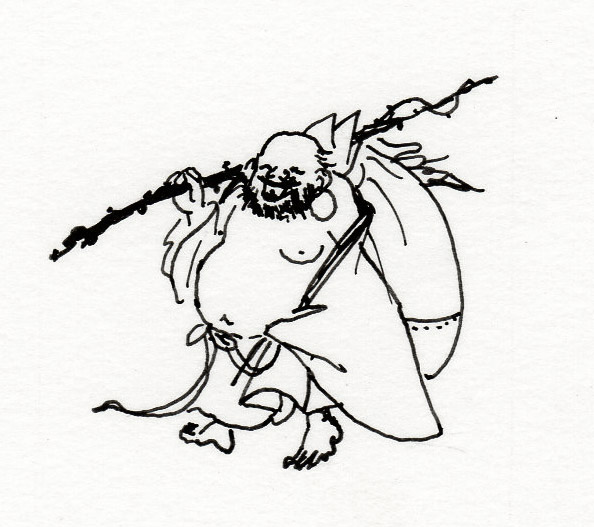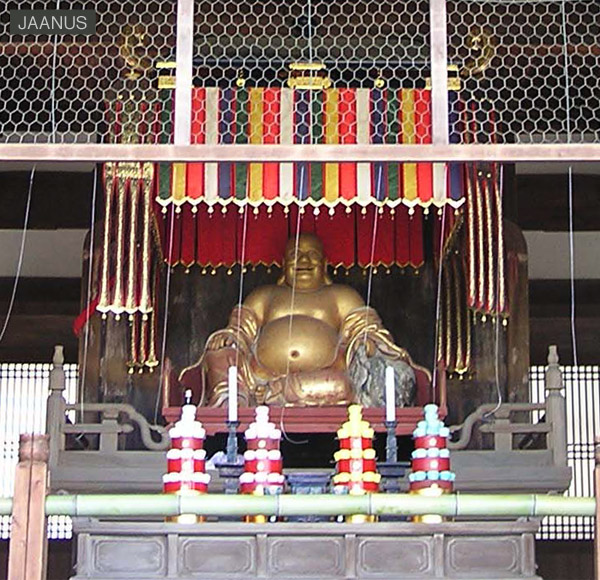|
||
 |
||
In painting Budai is shown with sparse hair, a smiling face, a large bare belly, loose garments and carrying a bag and wooden staff. In later paintings he is shown in a variety of poses, usually seated or sleeping on his bag, but also dancing, walking or pointing upwards at the moon. In Edo period painting Budai is frequently pictured together with groups of playing children. Early Chinese examples include paintings by Liang Kai (Jp: Ryou Kai À²; mid-13c, Kousetsu á Museum, Hyougo prefecture), Muqi (Jp: Mokkei qæ®; late 13c), and Yintuoluo (Jp: Indara öÉ ; late 14c, Nezu ªÃ Museum, Tokyo), while a plethora of Japanese versions range from works by Mokuan ÙÁ (?-1345) to Ogata Kourin ö`õÔ (1658-1716) to numerous *mitate-e ©§G prints in *ukiyo-e ¢G.


Miroku
Bosatsu Zazou íèÓìF¿F
Manpukuji Tenouden äÝV¤a (Kyoto)
Manpukuji Tenouden äÝV¤a (Kyoto)
@
@
(C)2001 Japanese Architecture and Art Net Users System.@No reproduction or republication without written permission.
fÚÌeLXgEÊ^ECXgÈÇASÄÌRec̳f¡»E]ÚðֶܷB

